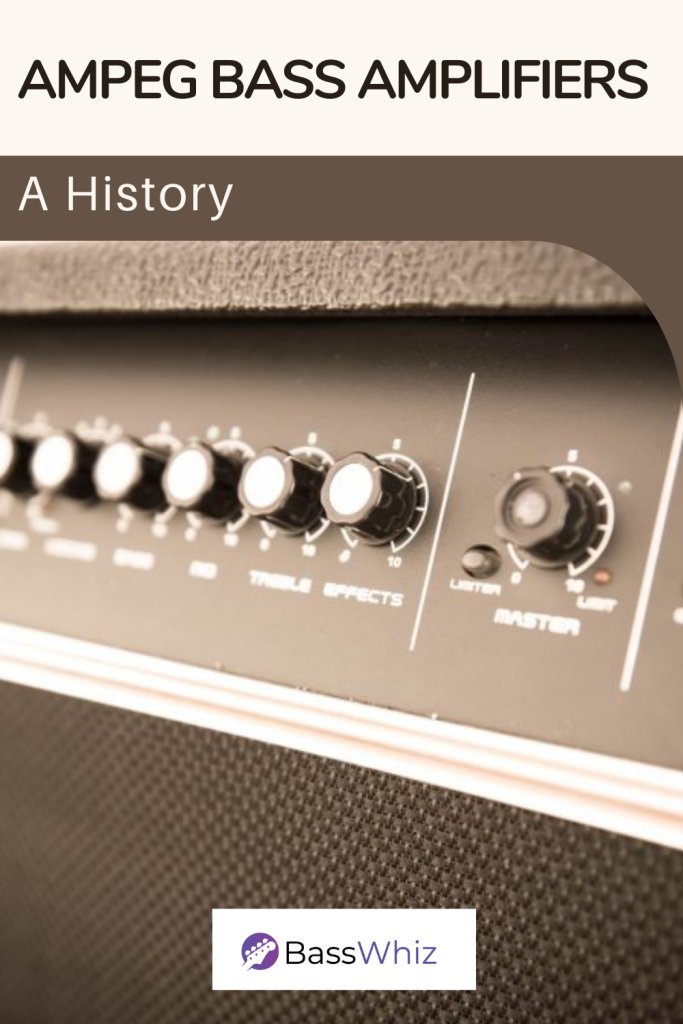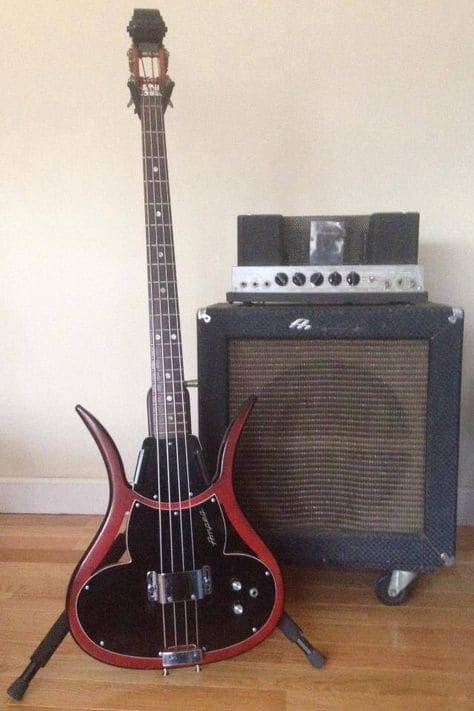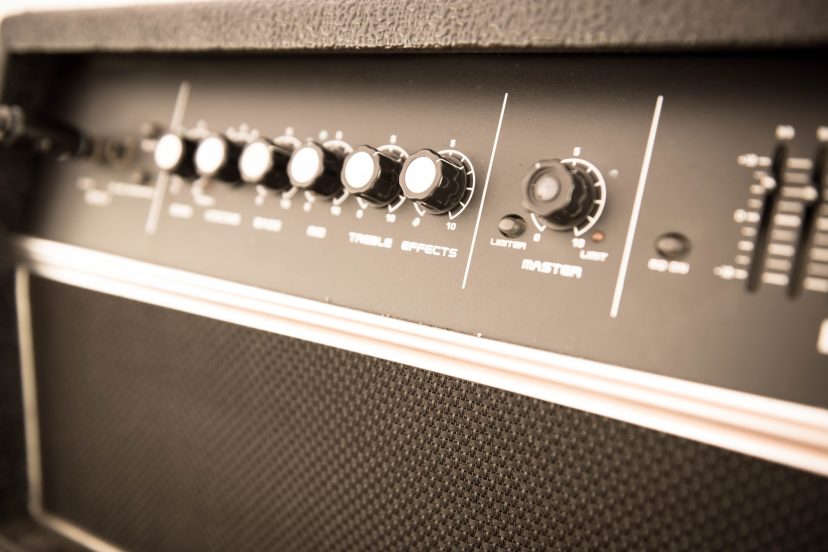Ampeg Bass Amplifiers: A History
Introduction to Ampeg Bass Amplifiers
My journey with Ampeg bass amplifiers has been nothing short of remarkable. Ampeg, a name synonymous with quality and innovation in bass amplification, has a rich history that’s as deep and resonant as the sounds their amps produce. In this article, we’ll dive into the legacy of Ampeg, exploring its origins, evolution, and the reasons behind its iconic status in the music world.
Origin and Brand Legacy
The story of Ampeg begins in the post-WWII era, a time of musical exploration and technological advancement. Established by Everett Hull, a passionate musician and a visionary, Ampeg set out to redefine the sound of the bass. It wasn’t just about louder volumes; it was about clarity, depth, and the soul of the music. This pursuit of excellence quickly set Ampeg apart in the nascent world of bass amplification.
Evolution Over the Years
From the very beginning, Ampeg was not just a brand; it was a promise of quality and innovation. The company’s evolution over the decades mirrored the changing landscape of music. Each era brought new challenges and opportunities, and Ampeg consistently rose to the occasion, adapting and innovating, ensuring that the bass guitar found its rightful place in the musical ensemble.
The Birth of Ampeg: The Early Years
The early years of Ampeg were marked by experimentation and a deep understanding of what bass players truly needed. It was during these formative years that Ampeg began to build its reputation as a maker of reliable, high-quality amplifiers.
The Founder’s Vision
Everett Hull’s vision was clear – create amplifiers that provide bass players with the sound quality they deserve. He understood that bass was not just about rhythm but an integral part of the musical harmony. This vision was the driving force behind the early designs and innovations that came out of Ampeg.
The First Ampeg Models
The first Ampeg models were a revelation in the bass amplification market. They offered a new level of sound clarity and reliability, quickly gaining popularity among bassists. These early models set the stage for what was to become a legendary line of amplifiers.
Rise to Fame: The 1960s and 1970s
The 1960s and 1970s were transformative decades for music, and Ampeg was right at the heart of this revolution. This period marked the rise of rock and roll, funk, and jazz fusion, genres that demanded more from bass amplifiers. Ampeg responded with groundbreaking models that became industry standards.
Innovation and Iconic Models
During this era, Ampeg’s innovation was unmatched. They introduced amplifiers that were not only powerful but also had a distinctive sound quality. Two models stood out: the SVT series and the B-15 Portaflex.
The SVT Series
The Super Valve Technology (SVT) series, introduced in the late 1960s, was a game-changer. As a bass player, I remember the first time I played through an SVT. The raw power and clarity it provided were unparalleled. It quickly became the go-to amplifier for professional bassists, renowned for its robust construction and reliable performance on large stages.

The B-15 Portaflex
The B-15 Portaflex, another hallmark of this era, was known for its portability and unique flip-top design. Ideal for studio work and smaller venues, this amp offered a rich and warm tone that many recording artists preferred. It’s no wonder it’s still revered by many bassists today, including myself.
Famous Users and Performances
During these decades, several legendary musicians adopted Ampeg. Artists like James Jamerson and Geddy Lee showcased the versatility and power of Ampeg amplifiers. Their performances left an indelible mark on the music industry, cementing Ampeg’s status as a leader in bass amplification.
Technological Advancements in the 1980s and 1990s
As the digital era dawned, Ampeg continued to innovate, integrating new technologies while maintaining their signature sound.
Digital Era and New Designs
In the 1980s and 1990s, Ampeg embraced digital technology, introducing amplifiers with more versatility and features. These advancements allowed for a broader range of sounds and settings, catering to the evolving needs of bass players.
Maintaining the Ampeg Legacy
Despite the technological changes, Ampeg’s commitment to quality and the ‘Ampeg sound’ remained steadfast. The brand continued to be revered for its durability, sound quality, and the way it could adapt to any genre or playing style.
The Modern Era of Ampeg
Today, Ampeg continues to be a dominant force in the world of bass amplification, blending traditional craftsmanship with modern innovation.
Current Range and Models
The current range of Ampeg amplifiers, including the classic SVT line and the versatile BA combo series, caters to the diverse needs of bassists. Whether it’s for live performances, studio recordings, or casual jamming, there’s an Ampeg amp that fits the bill.
The Ampeg Sound in Today’s Music
The ‘Ampeg sound’ remains a staple in today’s music, known for its depth, warmth, and versatility. It continues to be the preferred choice for many top artists across various genres, a testament to its enduring appeal.
Personal Experiences and Recommendations
In my years of playing bass and advising fellow musicians, my relationship with Ampeg amplifiers has been a journey of discovery, reliability, and unparalleled sound quality.
My Journey with Ampeg Amplifiers
From my first Ampeg V4 to the powerhouse SVT rigs, each amplifier has been a trusted companion on my musical journey. The consistency in tone, durability, and the sheer pleasure of playing through an Ampeg amp is something every bassist should experience. I currently own a RB 115 that I absolutely love.

Why Choose Ampeg? Personal Suggestions
If you’re considering an amplifier, here are a few reasons to choose Ampeg:
- Reliability: Ampeg amps are built to last, handling the rigors of touring and studio work with ease.
- Tone Quality: Whether you’re after a punchy, modern sound or a warm, vintage tone, Ampeg delivers.
- Versatility: Suitable for any genre, Ampeg amps can adapt to your playing style and musical preferences.
Ampeg’s journey is one of constant innovation and commitment to quality. Their amplifiers have shaped the sound of countless iconic recordings and live performances, making an indelible mark on the music industry. I have no doubt that Ampeg will continue to innovate and inspire future generations of musicians. Their legacy is not just in their products, but in the music they help create.
Conclusion: The Enduring Legacy of Ampeg Bass Amps
As we explore the history of Ampeg bass amplifiers, it’s clear that the brand’s impact on music is profound and enduring. From their early innovations to their modern offerings, Ampeg has consistently provided bass players with tools to express themselves musically.
FAQs
- What makes Ampeg amplifiers unique?
- Ampeg amplifiers are known for their distinctive tone, reliability, and innovative designs that have stood the test of time.
- Which Ampeg amplifier is best for beginners?
- The BA series combo amplifiers are great for beginners, offering quality sound and ease of use at an affordable price.
- Can Ampeg amps be used for genres other than rock and jazz?
- Absolutely! Ampeg amps are versatile and can be used across various genres, from country to metal and everything in between.
- Are vintage Ampeg amps still worth purchasing?
- Yes, vintage Ampeg amps are highly sought after for their unique sound character and build quality. However, ensure they are in good condition.
- How do Ampeg amps compare to other brands in the market?
- Ampeg amps are often praised for their unique tonal qualities and robust build. They stand alongside other top brands as a preferred choice for many professional bassists.




